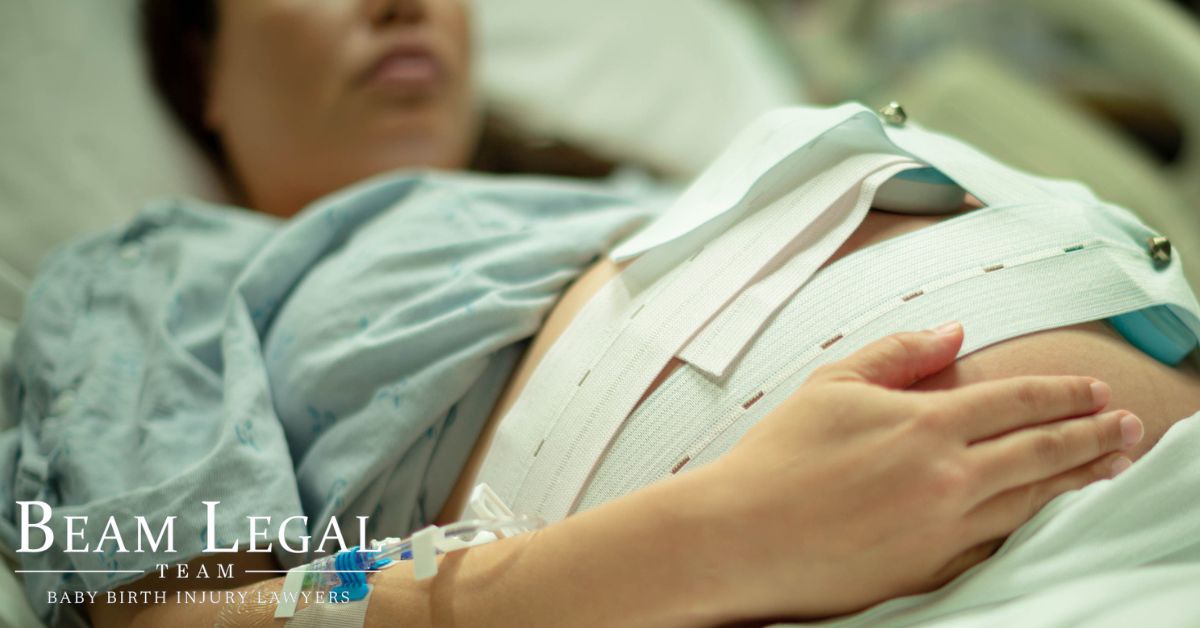
Childbirth is filled with anticipation and hope. Over the years, the field of labor and delivery (L&D) has undergone numerous advancements, making the process safer for mothers and their babies.
Despite these improvements, birth injuries can still occur, often due to medical negligence. Expectant parents can confidently navigate the journey by understanding the historical challenges and modern advancements in labor and delivery.
If you suspect poor medical care caused a birth injury to your child, our Chicago birth injury lawyers at Beam Legal Team can help you seek compensation.
Historical Challenges With Labor and Delivery
Historically, childbirth was fraught with risks and complications. In the early 20th century, maternal and infant mortality rates were alarmingly high. For every 1,000 live births, anywhere from six to nine women died from pregnancy-related complications in the United States, and approximately 100 infants died before reaching their first birthdays.
Many births took place at home without professional medical assistance, leading to inadequate care during complications. Even in medical settings, doctors often used tools or methods that led to further complications, such as forceps, which could cause trauma during delivery.
Infection, bleeding, and obstructed labor were common causes of maternal death. For infants, common causes of mortality included infections, lack of adequate healthcare, and poor prenatal care in the mother.
Technological and Training Improvements in L&D
Advancements in technology and training have improved L&D practices, boosting childbirth safety for infants and mothers. These improvements involve the adoption of cutting-edge technologies and the implementation of updated care practices.
Here’s a closer look at how these developments have shaped modern L&D:
- Fetal Monitoring: Continuous electronic fetal monitoring (EFM) allows healthcare providers to track the baby’s heart rate and other vital signs during labor. This technology helps detect signs of fetal distress early, enabling timely interventions.
- Improved Cesarean Techniques: Advances in surgical techniques and anesthesia have made cesarean sections safer and more common. The material mortality rate is now only 2.2 per 100,000 cesarean deliveries. Modern cesarean methods reduce the risk of infection and recovery time, making the procedure a viable and safe option for complicated deliveries.
- Epidural Anesthesia: Epidurals provide effective pain relief during labor, allowing mothers to remain awake and alert while minimizing discomfort. This advancement has made the childbirth experience more manageable for many women.
- Enhanced Training for Birth Attendants: Regular training and simulations for obstetricians, nurses, and midwives have improved their ability to handle high-pressure situations and emergencies. These training programs focus on teamwork, communication, and decision-making skills.
- Evidence-Based Protocols: Implementing standardized, evidence-based protocols in hospitals has improved the consistency and quality of care. These protocols cover various aspects of labor management, including the use of delivery tools, fetal monitoring, and emergency procedures.
Impact of Boosted Tools and Training
L&D advancements have improved labor and delivery with better monitoring, pain management, and surgical techniques. This progress has helped reduce maternal mortality to 22.3 deaths per 100,000 live births (down from 32.9 in 2021). For infant mortality, the rate in 2023 was 5.47 per 1,000 live births in the U.S.
Maternal and neonatal care trends may further improve the experience for mothers and babies. For instance, artificial intelligence can analyze fetal heart rate patterns and predict complications before they arise. Personalized medicine, such as genetic screening, can provide tailored healthcare plans for mothers and infants based on their unique genetic profiles.
Additionally, telemedicine is expanding, offering remote prenatal consultations and continuous monitoring. This access to care benefits those in underserved or rural areas, ensuring comprehensive care for all mothers and infants.
Birth Injuries Can Still Occur
Despite the improvements in technology and care practices, birth injuries can and do still occur. These injuries often result from medical negligence, such as failure to monitor fetal distress or improper use of delivery tools.
Birth injuries occur in about 1.9 of every 1,000 babies born in the United States. While this rate has declined over the decades, lowering from 2.6 per 1,000 live births as recently as 2004, the impact on affected families remains profound.
Improper use of forceps or vacuum extractors can lead to conditions like Erb’s palsy, affecting a baby’s arm movement. Mismanagement of labor-inducing drugs such as Pitocin can cause uterine hyperstimulation, reducing the baby’s oxygen supply and potentially causing brain injury. Even with advanced fetal monitoring, delayed or inappropriate responses to distress signals can have severe consequences.
These potential injuries highlight the need for adequate, skilled medical care for both mothers and their babies through pregnancy and L&D to ensure a safe and injury-free birth.
Get Experienced Legal Guidance After a Birth Injury
While advancements have made childbirth safer, errors in judgment or care can still have devastating consequences. If you suspect your child has suffered a birth injury because of medical negligence, it’s essential to understand your rights and options.
The Chicago birth injury lawyers at Beam Legal Team specialize in complex L&D cases nationwide. With decades of experience and a track record of successful verdicts and settlements, we can guide your family through the legal process and secure compensation for your child’s care.
Contact us today for a free and confidential case review. Our compassionate attorneys will listen to your story, evaluate your case, and help you understand the best option forward for your family.
